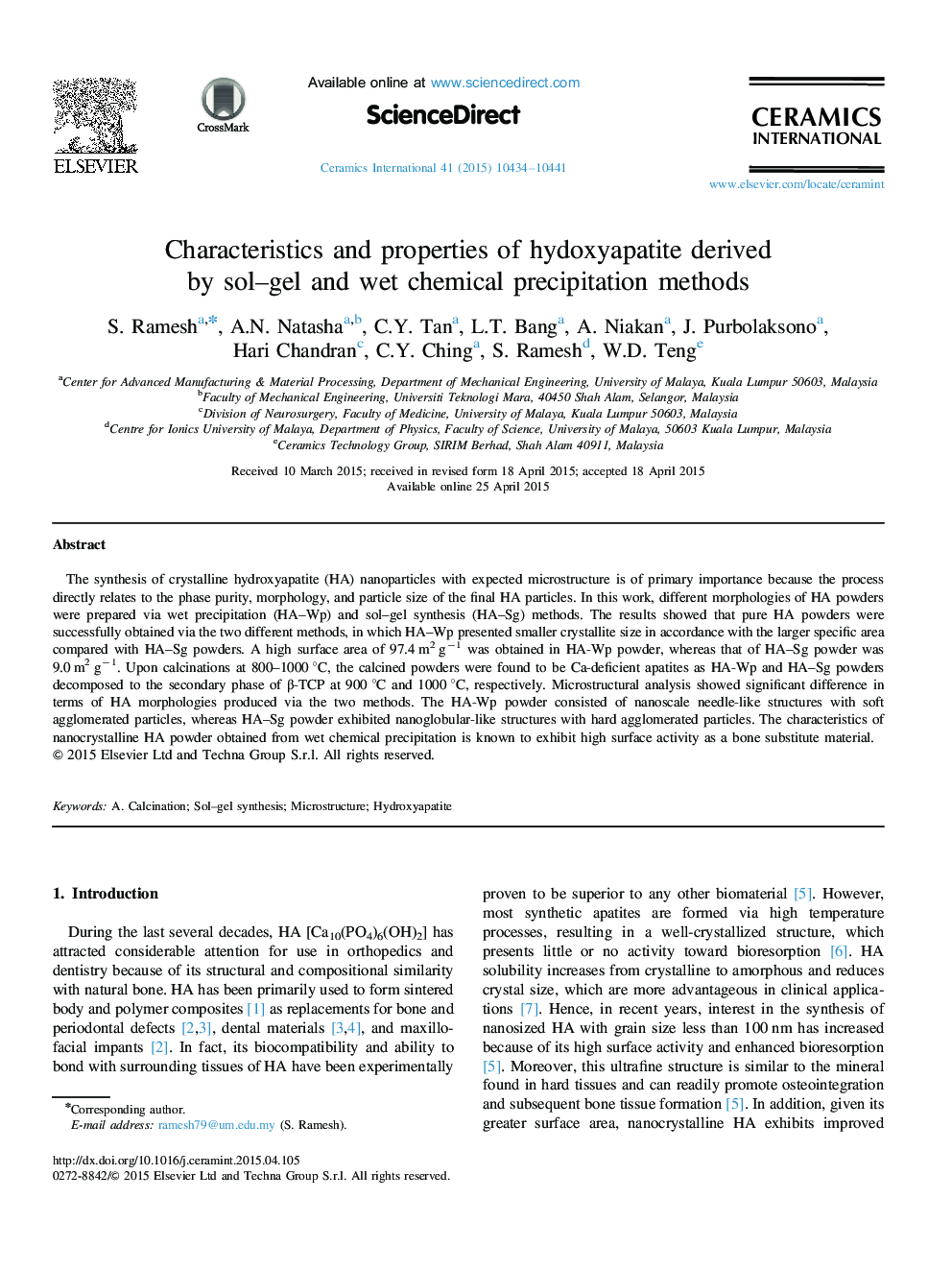| کد مقاله | کد نشریه | سال انتشار | مقاله انگلیسی | نسخه تمام متن |
|---|---|---|---|---|
| 1459996 | 989600 | 2015 | 8 صفحه PDF | دانلود رایگان |
The synthesis of crystalline hydroxyapatite (HA) nanoparticles with expected microstructure is of primary importance because the process directly relates to the phase purity, morphology, and particle size of the final HA particles. In this work, different morphologies of HA powders were prepared via wet precipitation (HA–Wp) and sol–gel synthesis (HA–Sg) methods. The results showed that pure HA powders were successfully obtained via the two different methods, in which HA–Wp presented smaller crystallite size in accordance with the larger specific area compared with HA–Sg powders. A high surface area of 97.4 m2 g−1 was obtained in HA-Wp powder, whereas that of HA–Sg powder was 9.0 m2 g−1. Upon calcinations at 800–1000 °C, the calcined powders were found to be Ca-deficient apatites as HA-Wp and HA–Sg powders decomposed to the secondary phase of β-TCP at 900 °C and 1000 °C, respectively. Microstructural analysis showed significant difference in terms of HA morphologies produced via the two methods. The HA-Wp powder consisted of nanoscale needle-like structures with soft agglomerated particles, whereas HA–Sg powder exhibited nanoglobular-like structures with hard agglomerated particles. The characteristics of nanocrystalline HA powder obtained from wet chemical precipitation is known to exhibit high surface activity as a bone substitute material.
Journal: Ceramics International - Volume 41, Issue 9, Part A, November 2015, Pages 10434–10441
